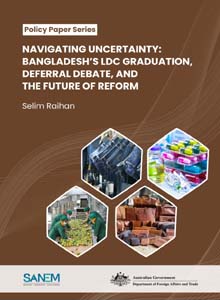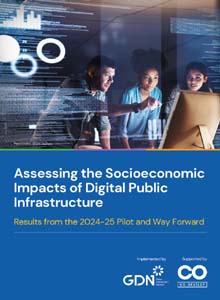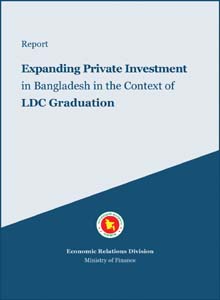
Investment Diversification of Priority Sectors after LDC Graduation
 Citation: Raihan, S., Reaz, M. M., Sadat, S., Sharmin, E., Aahad, M. A., Surid, T. F., Das, D., Tasneem, S., Roy, S., Alam, H. and Rahman, Z. (2025). Investment Diversification of Priority Sectors after LDC Graduation. A report prepared for the United Nations Development Programme (UNDP) Bangladesh and Bangladesh Investment Development Authority (BIDA).
Citation: Raihan, S., Reaz, M. M., Sadat, S., Sharmin, E., Aahad, M. A., Surid, T. F., Das, D., Tasneem, S., Roy, S., Alam, H. and Rahman, Z. (2025). Investment Diversification of Priority Sectors after LDC Graduation. A report prepared for the United Nations Development Programme (UNDP) Bangladesh and Bangladesh Investment Development Authority (BIDA).
As Bangladesh prepares to graduate from its Least Developed Country (LDC) status in 2026, the country faces both opportunities and challenges, particularly in terms of investment and economic sustainability. The loss of International Support Measures (ISMs) and preferential trade benefits makes it imperative for Bangladesh to diversify its investment landscape and reduce reliance on the Ready-Made Garments (RMG) sector. To successfully navigate this period, it is essential to implement well-crafted, sector-specific policies that enhance the investment climate, boost economic resilience, and capitalize on emerging opportunities.
This study identifies three priority sectors for investment diversification, i.e., agro-processing, jute and jute products, and IT and IT-enabled services (ITES) from a pool of 29 sectors. This identification is based on criteria such as domestic and international market potential, sector readiness, SME linkages, and job creation. Both qualitative and quantitative data have been collected for this study. For the quantitative data, an enterprise survey of 972 firms across Dhaka, Khulna, and Chittagong was conducted. Also, qualitative data was collected through key informant interviews and focus group discussions.
According to the findings, in the agro-processing sector, Bangladesh has strong domestic demand and export potential, particularly in fish, meat, vegetables, and packaged foods. However, the sector is hindered by infrastructure limitations, financial barriers, certification and compliance challenges, and a significant shortage of skilled labour. The study recommendations include establishing domestic testing labs, reducing import taxes, supporting contract farming, improving logistics, and investing in vocational training. Similarly, the jute sector, although vital to SMEs and exports, suffers from over-reliance on raw jute, outdated machinery, financing difficulties, and stringent international standards. To address these, the study suggests promoting product diversification, modernizing production facilities, investing in R&D, encouraging investor interest through incentives, and fostering international diplomacy to resolve trade barriers.
Meanwhile, the IT and ITES sectors are rapidly growing with high productivity and export orientation, especially in software development, digital marketing, and cybersecurity. Nevertheless, it faces serious issues such as inadequate digital infrastructure, financing challenges, lack of standardized asset valuation, high import tariffs, and absence of widely accepted online payment systems like PayPal. The study recommends enacting venture capital legislation, enhancing intellectual property rights, building better IT parks, and establishing stable, long-term policies. Promoting Bangladesh’s IT capabilities globally and enabling secure digital payment systems are also key to unlocking the sector’s full potential.
In conclusion, while all three sectors hold considerable promise, they are constrained by systemic issues in infrastructure, finance, and regulation. Addressing these will be critical for Bangladesh to maintain economic momentum and ensure a smooth transition beyond LDC status. Strategic reforms and targeted investments are essential to build a resilient, diversified, and globally competitive economy.



